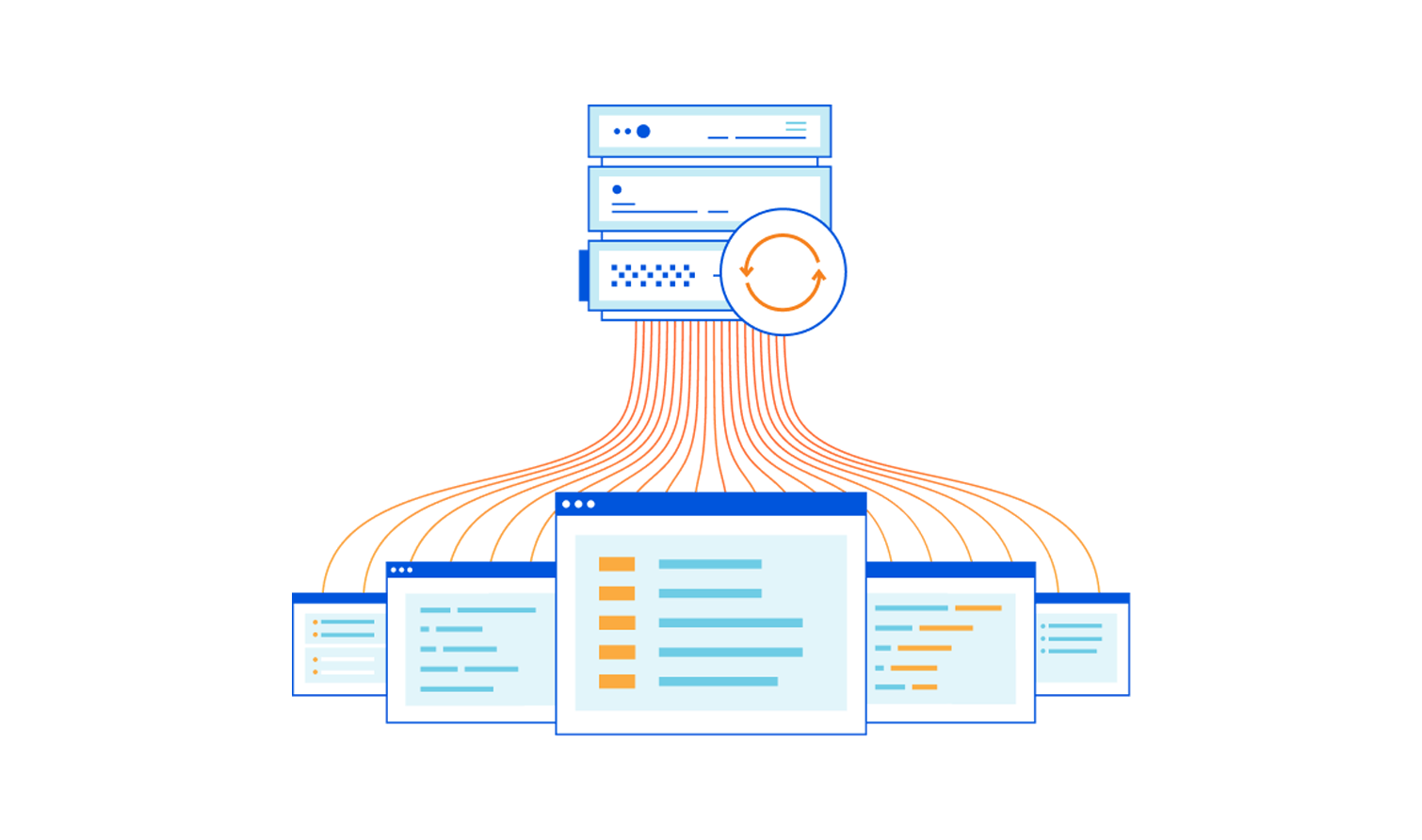Network Break 342: SolarWinds Back In Security Hot Seat; In Defense Of The Fax Machine
Today's Network Break podcast delves into security issues at SolarWinds and SonicWall, discusses a new network offload capability between NVIDIA and Palo Alto Networks, comments on Japanese bureaucrats who refuse to give up their fax machines, and more tech news.
The post Network Break 342: SolarWinds Back In Security Hot Seat; In Defense Of The Fax Machine appeared first on Packet Pushers.
The Importance of Having a Good Data Destruction Policy
Data destruction is an often-overlooked, yet vital operation that requires good policy to minimize the risk of data breaches.The Week in Internet News: U.S. Health Official Warns of COVID Misinformation Online

Bad information: The U.S. surgeon general, the nation’s top public health spokesman, is calling on social media outlets to crack down on misinformation about COVID-19 and the safety of vaccines, The New York Times reports. Misinformation about the pandemic and the vaccines available is “an urgent threat to public health,” Dr. Vivek Murthy said. “Modern […]
The post The Week in Internet News: U.S. Health Official Warns of COVID Misinformation Online appeared first on Internet Society.
Who decides if the network is unhealthy?
I started in networking at Amazon in the fall of 2002. When we were paged for a problem it was because one of the users/services on the network was having problems and they thought it was the network. We never knew ourselves that the network was broken until somebody told...Bash #1. Automating Troubleshooting (Cumulus) Linux Networking
Hello my friend,
Very often at our zero-to-hero network automation training we are asked, what is the benefit of Bash? Why do we need to know Bash, if everyone is talking about Bash? The question is absolutely legitimate. One of the interesting and also legitimate answers I’ve just figured the last week.
2
3
4
5
retrieval system, or transmitted in any form or by any
means, electronic, mechanical or photocopying, recording,
or otherwise, for commercial purposes without the
prior permission of the author.
Do you finally write about network automation?
Everything in your network and IT operational processes can be automated. It is just matter of the resources (time, money, efforts) you spent on that against the gain you are obtaining. Basically, that is something what financial guys and girls call ROI (Return On Investments). The bigger the outcome and the lower the effort, the better the overall automation solution.
In our automation trainings we explain various use cases and success (and failure) strategies, how to build the (network) automation systems and tools, to make sure your gain is maximum. Our instructors have an extensive experience building Continue reading
What Drives Innovation in Business?
The world is running competition. The more businesses that pop up, the more the competition increases. The increase in competition gives birth to a concept called “innovation.” Innovation is a concept that isn’t foreign, and after every few decades, there comes a shift in the world where innovation takes over. People nowadays shift very fast from new ideas to other ideas, so businesses need to keep up with that. They need to be able to produce ideas that are new, interesting, and innovative.
The question arises, what drives innovation in business and what is business innovation in the first place?
What is Business Innovation?
Business innovation is when businesses and companies bring new ideas, plans, and services to their customers, which will help not only boost their popularity but also help boost their revenue and profit. Innovations in business keep them relevant through time and make them the top business they want to refer to.
Why a Business Needs Innovation?
Another question that many business owners ask a lot is, what drives innovation in business? What makes it a driving force that essentially propels a business from a small-time business to a big company? Here Continue reading
Should We Embrace Points of Failure?

There was a tweet making the rounds this last week that gave me pause. Max Clark said that we should embrace single points of failure in the network. His post was an impassioned plea to networking rock stars out there to drop redundancy out of their networks and instead embrace these Single Points of Failure (SPoF). The main points Mr. Clark made boil down to a couple of major statements:
- Single-device networks are less complex and easier to manage and troubleshoot. Don’t have multiple devices when an all-in-one works better.
- Consumer-grade hardware is cheaper and easier to understand, therefore it’s better. Plus, if you need a backup you can just buy a second one and keep it on the shelf.
I’m sure more networking pros out there are practically bristling at these suggestions. Others may read through the original tweet and think this was a tongue-in-cheek post. Let’s look at the argument logically and understand why this has some merit but is ultimately flawed.
Missing Minutes Matter
I’m going to tackle the second point first. The idea that you can use cheaper gear and have cold standby equipment just sitting on the shelf is one that I’ve heard of many Continue reading
Technology Short Take 142
Welcome to Technology Short Take #142! This time around, the Networking section is a bit light, but I’ve got plenty of cloud computing links and articles for you to enjoy, along with some stuff on OSes and applications, programming, and soft skills. Hopefully there’s something useful here for you!
Networking
- Bill Doerrfeld discusses the use of WebAssembly to extend the Envoy proxy here after a discussion with Idit Levine, CEO and founder of Solo.io. Envoy is increasingly becoming an important component in many cloud-native networking solutions, so the ability to extend or customize Envoy’s behavior is quite important in my opinion.
Servers/Hardware
- Kevin Houston speculates on the future of the blade server, wondering if higher-wattage CPUs mean the end of the blade server form factor.
- Is the introduction of Google Cloud’s new Tau VMs an indication that AMD’s influence continues to grow over Intel’s?
Security
- Andy Robbins discusses the concept of attack paths (specifically, identity-based attack paths) in this post.
- Matt Fuller has authored a pretty comprehensive look at the ways data can be shared across AWS accounts.
- Microsoft has released clarified guidance for dealing with the recent Windows Print Spooler vulnerability.
Cloud Computing/Cloud Management
- Etcd—the key-value store Continue reading
Vodfaone NB-IOT, Fipy and AWS
Timeline : 2-4 months on a occasional weekends
Having a sensor to sense things is one story, Having an on-field sensor is another story in itself. While powering up the sensor and weather proofing is not the intention of this blog post but sure they are the other aspects that one needs to address before moving to higher layer communications.

success only once out of 3 times of sowing
Issue – Have a sensor on Field, make sure it communicates itself to AWS IOT end platform. This is not that simple, that too without using high cost end products which abstracts everything from end-user. To put it in simple terms, you have a field or a farm which is quite away from your home and without a power resource, what would you do ?
Lora is one the most effective option that works for us, while I did setup a Gateway and end-node Lora Device, this post aims at something more simple without involving Lora, I will cover Continue reading
Heavy Networking 589: Cloud Networking’s Good, Bad, And Ugly: What CSPs Don’t Tell You (Sponsored)
Today's Heavy Networking examines how some of the unpleasant bits of cloud networking can be improved, particularly in the areas of troubleshooting, visibility, security, and automation. Our sponsor is Aviatrix, and they’ve sent us three architects to nerd out about cloud network design and how Aviatrix might fit into the picture. Our guests are Brad Hedlund and James Devine from Aviatrix, and customer Chris Oliver with NI.Heavy Networking 589: Cloud Networking’s Good, Bad, And Ugly: What CSPs Don’t Tell You (Sponsored)
Today's Heavy Networking examines how some of the unpleasant bits of cloud networking can be improved, particularly in the areas of troubleshooting, visibility, security, and automation. Our sponsor is Aviatrix, and they’ve sent us three architects to nerd out about cloud network design and how Aviatrix might fit into the picture. Our guests are Brad Hedlund and James Devine from Aviatrix, and customer Chris Oliver with NI.
The post Heavy Networking 589: Cloud Networking’s Good, Bad, And Ugly: What CSPs Don’t Tell You (Sponsored) appeared first on Packet Pushers.
Rich, complex rules for advanced load balancing


Load Balancing — functionality that’s been around for the last 30 years to help businesses leverage their existing infrastructure resources. Load balancing works by proactively steering traffic away from unhealthy origin servers and — for more advanced solutions — intelligently distributing traffic load based on different steering algorithms. This process ensures that errors aren’t served to end users and empowers businesses to tightly couple overall business objectives to their traffic behavior.
What’s important for load balancing today?
We are no longer in the age where setting up a fixed amount of servers in a data center is enough to meet the massive growth of users browsing the Internet. This means that we are well past the time when there is a one size fits all solution to suffice the needs of different businesses. Today, customers look for load balancers that are easy to use, propagate changes quickly, and — especially now — provide the most feature flexibility. Feature flexibility has become so important because different businesses have different paths to success and, consequently, different challenges! Let’s go through a few common use cases:
- You might have an application split into microservices, where specific origins support segments of your application. You Continue reading
Calico eBPF Data Plane Deep-Dive
Why Take the Lid Off if it’s Working?
Sometimes the best way to understand something is to take it apart and see how it works. This blog post will help you take the lid off your Calico eBPF data plane based Kubernetes cluster and see how the forwarding is actually happening. The bonus is, unlike home repairs, you don’t even have to try to figure out how to put it back together again!
The target audience for this post is users who are already running a cluster with the eBPF data plane, either as a proof-of-concept or in production. Therefore, we will not go through the steps to set up a cluster from scratch. If you would like to learn how to do that, the best starting point is this documentation.
In the best case and likely scenario, you will have no data plane issues in the future and this knowledge will still help you to make informed decisions about the Calico eBPF data plane and your future clusters, and how to get the best from them. Knowledge is power!
If you are unlucky enough to experience future issues, being armed with a good understanding of the underlying technologies will Continue reading